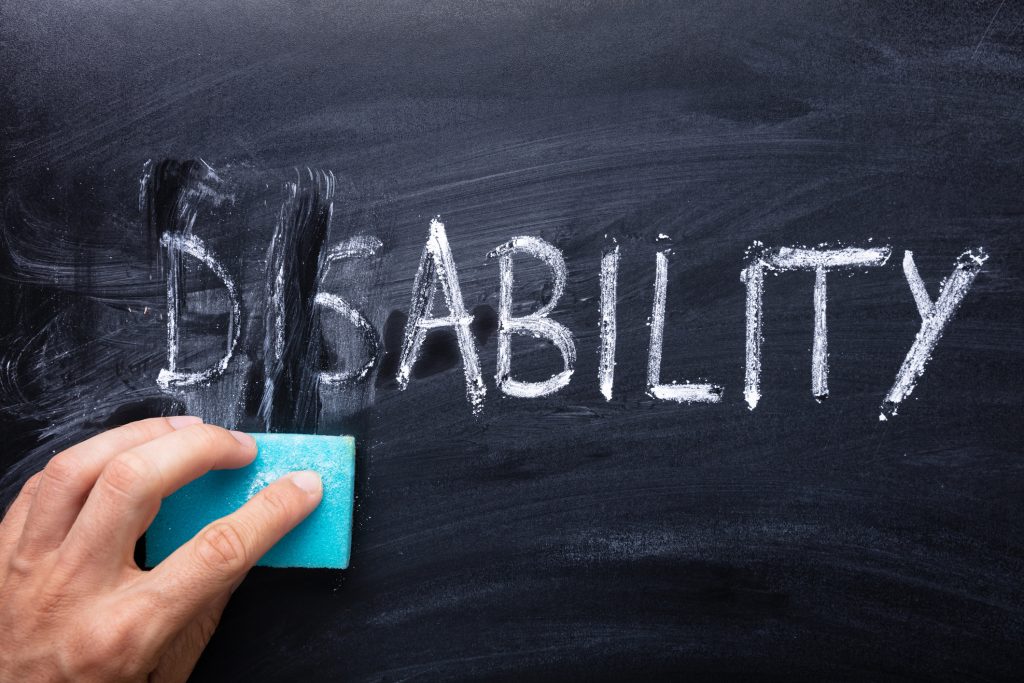5 Steps To Recruiting And Retaining Disabled Talent
RECRUITMENT • Dec 1, 2021

Covid-19 affected the lives of every one of us in unprecedented ways. From social restrictions to political and economic upheaval, life for many of us become stressful and unpredictable. However, as experts have pointed out, few groups have been affected more severely than the disabled community. Earlier this year, The Lancet reported that this was due to a combination of three factors: an increased risk of severe illness or death, reduced access to routine healthcare, and the adverse social impacts of government attempts to mitigate the pandemic’s impact. As health and social care resources became difficult to access and isolation was enforced, many disabled people reported feeling stripped of their independence, and either uncomfortably reliant on others to fulfil their needs, or unable to fulfil their needs at all. Furthermore, the UK government reported that disabled people were more likely to face redundancy than non-disabled people, and that 71% had seen their work impacted by the pandemic. These issues served to fuel a fire that has long been raging; the disability employment gap in the UK has stubbornly remained at around 30% for the last decade, bolstered by unfair prejudice, false stereotypes, and an unwillingness from employers to make the accommodations necessary to attract and retain disabled applicants – despite the fact that one in five people in the UK experiences some form of disability. Advocacy groups have long pointed out that organisations have a responsibility to raise the bar, and those that have are reaping the rewards in the form of higher levels of innovation, productivity, and performance. In this blog post, we’ll explore some simple ways companies can make their hiring practices more inclusive, and attract and retain disabled candidates.
1. Think carefully about your job descriptions
It’s important to carefully consider the presentation of your job adverts. Use a font that’s simple and easy to read, avoid italics, and use a larger font size where possible. Remove unnecessary jargon, use plain English, and be as precise as possible. Take the time to consider whether all of your ‘requirements’ are actually necessary; for instance, how many job adverts have you seen that list a UK driving license as desirable or necessary, even though the successful candidate won’t be required to drive? This could unintentionally rule out a disabled applicant who might otherwise be the best person for the job. Of course, it may be the case that the role you’re advertising does require some physical work. In which case, think about what accommodations you can offer, or how the position may be altered to allow people with physical limitations to carry it out, and make it clear you’re willing to make such adaptations in the job description.
2. Make your equal opportunities policy prominent
By law, every company is required to be an equal opportunities employer. However, it’s a good idea for any company to have a formal equal opportunities policy in place, and make it as prominent as possible, which will help disabled people to feel more comfortable applying for positions within your organisation. If your company has a careers section, this is also an ideal place to reinforce the fact that you welcome applications regardless of race, gender, disability, sexual orientation, or age. It’s also a good idea to provide the contact information of someone within your organisation who will be able to provide additional information, and discuss any additional access requirements or reasonable adjustments that may be required for disabled applicants. It’s vital that this person should be warm, welcoming, and comfortable answering questions honestly – first impressions count.
3. Prioritise access for all
When a disabled person is considering applying for a job at your company, one of the first things they’ll wonder is whether or not they’ll feel comfortable and supported working there. Disabled applicants are very likely to ask what accommodations you have in place, and if the answer is ‘none’, you’ll be ruling out a significant amount of candidates. To address this, firstly think about the physical features of your workplace; can a person with a physical disability access different floors without using the stairs? Are your corridors wide enough for wheelchair users? Could clearer signage and braille be introduced to your workplace? Furthermore, truly inclusive design means ensuring people with disabilities can also use the websites, platforms, and other digital tools required to do their job. This is where assistive technology can be a huge help, such as speech recognition, colour-coded keyboards, or sign language apps. Prioritising these adaptations in your workplace is a sign that you value the contribution disabled workers can make to your company, and that their comfort and happiness is a priority.
4. Focus on job skills, not interview skills
Lots of incredibly skilled and capable candidates may perform poorly within a typical job interview scenario, for a variety of reasons. Neurodivergent candidates may find it tricky to maintain eye contact or communicate in the ‘expected’ manner. Candidates with speech and language difficulties will find it challenging to express themselves in a way that fully reflects their capabilities. Therefore, it makes sense to structure interview processes so that you focus on the individual’s ability to complete job-related tasks, rather than off-the-cuff questions an applicant cannot truly prepare for. For instance, if a candidate is applying for an admin position, give them a short task to complete that will allow them to demonstrate how well they can do the job, rather than just talk about it. If you require candidates to undergo any form of assessment, it’s also crucial to ensure this process is accessible to all, meeting any additional communication needs a candidate may have. Of course, it’s also important to always remain aware of the law; The Equality Act 2010 prevents prospective employers from asking candidates about their health or disability prior to them receiving a job offer. It’s therefore important not to ask, but make it clear you’re willing to make accommodations, so the candidate feels comfortable broaching the subject themselves.
5. Create an inclusive culture
Even though it’s the last point on our list, it’s by far the most important. It’s also one of the most beneficial things you can do for your business: it’s proven that more inclusive companies have higher customer satisfaction rates and improved business performance. Plus, diversity of thought helps to bring new perspectives, overcome challenges, and boost innovation. If your company is known for its inclusive culture, top disabled candidates will naturally be drawn to apply for your vacancies. If you’re unsure where to begin, here are some tips all companies can follow.
Listen to your current employees. It’s vital that you understand how your current employees feel, and that they’re able to speak openly without repercussions. You might consider holding focus groups, and request anonymous feedback through online surveys. This will help you gain a better understanding of what is currently working for employees, and what you can do better.
Do some honest investigation. Does organisational data show that certain demographics within your company aren’t progressing as expected? If so, you’ll need to conduct a review of your internal promotion processes, as well as implement practical ways to tackle the issue, such as mentoring and sponsorship schemes.
Don’t focus on quota filling. Hitting arbitrary equality, diversity and inclusion targets will not automatically create an inclusive culture. Too often, senior leaders focus disproportionately on the employee pipeline, without taking an honest look at the end-to-end employee experience. A truly inclusive company culture should be something your organisation lives and breathes daily. As ED&I expert Verna Myers once said, diversity is being invited to the party, inclusion is being asked to dance.
Hire for culture add, not culture fit. During the interview process, alongside assessing occupational competency, many company leaders will attempt to discover whether the person in front of them is someone they’d happily have a beer with. The trouble is, such thought processes are inherently laden with unconscious bias, meaning interviewers are more likely to favour someone who thinks, acts, and looks like they do. At its worst, culture fit justifies prejudice, leading to discrimination against candidates who do not fit a predetermined cultural mould.
Create a socially inclusive workplace. One of the most effective ways to combat stereotypes that negatively affect disabled people is to encourage familiarity through inclusive social activities. This means that in time, old attitudes will give way to friendship and respect, and unhelpful preconceptions will be dismissed. Remember to choose accessible team building activities that everyone in the team can comfortably participate in.
Of course, it’s important to understand that no facets of identity operate in a vacuum. For instance, a disabled black woman will experience significantly more discrimination than a disabled white man. For this reason, ED&I professionals point out that workplaces should be implementing an intersectional approach to inclusion and accessibility, to ensure that they’re welcoming people of all experiences and backgrounds. Nevertheless, the measures detailed above are an excellent place to start in helping disabled candidates feel more comfortable during the recruitment process and beyond. It’s more effort, but it’s worth it; workplace diversity is far more than simply a politically correct fad – it’s a serious competitive advantage which inevitably leads to increased creativity, employee engagement, and commercial success.
Find a job that lets you be your authentic self. We’ve hundreds of positions available in industries such as accountancy, human resources, marketing and digital, IT, and many more. Alternatively, you can search all our positions here, or register with us.






